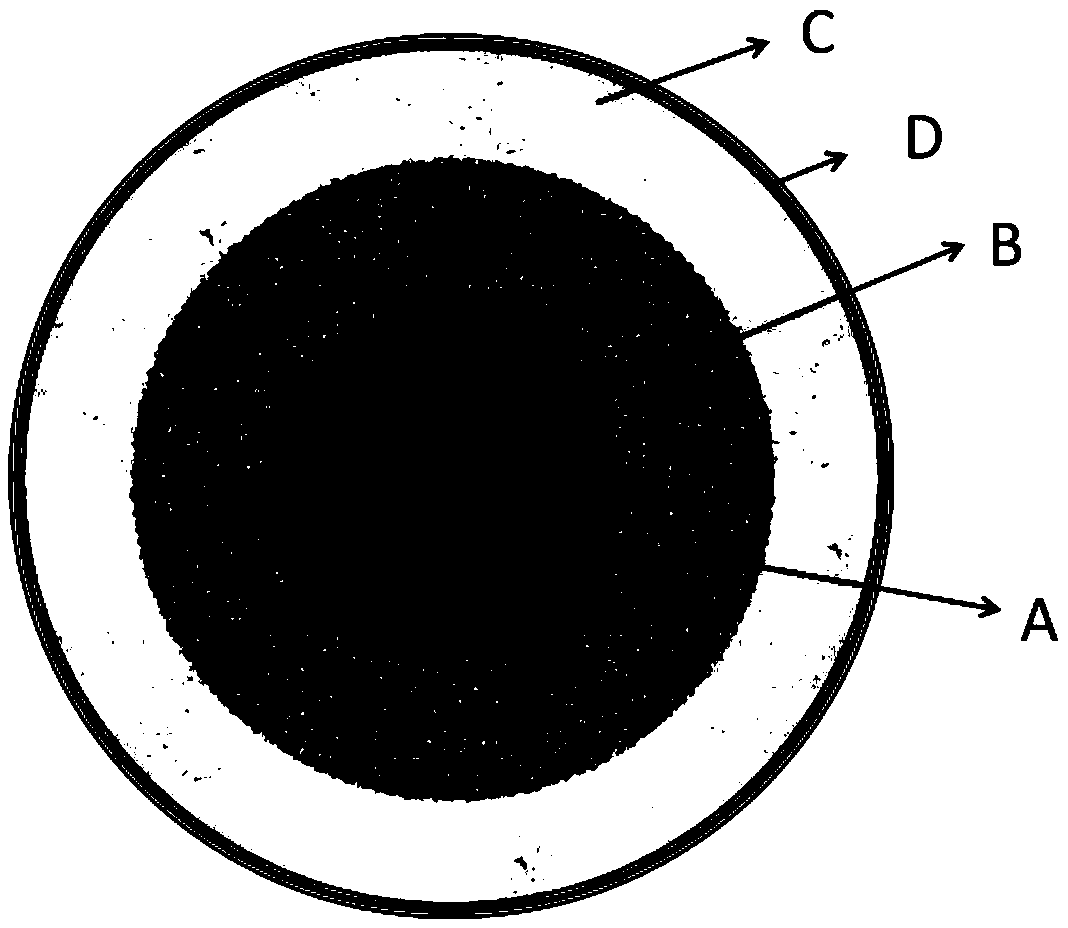Sulfate reducing bacteria embedded particle for treating ionic rare earth mine wastewater as well as preparation method and application thereof
A technology for ionic rare earths and mine wastewater, applied in the direction of microorganism-based methods, biochemical equipment and methods, chemical instruments and methods, etc., can solve the problems that affect the application effect and the carbon source has not been processed, so as to make up for the poor mechanical properties , Solve the poor application effect and reduce the inhibition effect
- Summary
- Abstract
- Description
- Claims
- Application Information
AI Technical Summary
Problems solved by technology
Method used
Image
Examples
Embodiment 1
[0044] Prepare enhanced immobilized sulfate-reducing bacteria-embedded granules as follows:
[0045] (1) First, carry out anaerobic enrichment culture on the screened sulfate-reducing bacteria to obtain a sulfate-reducing bacteria enrichment solution; the sulfate-reducing bacteria enrichment solution and sterile water are made into an anaerobic hanging film according to the mass ratio of 1:9 liquid; adding granular nanometer zero-valent iron biochar into the anaerobic membrane-hanging liquid, and membrane-hanging for 4-7 days to obtain membrane-hanging biochar balls;
[0046] (2) Carry out enrichment culture of complex molds to obtain mold enrichment liquid; add mold enrichment liquid into sterile water at a ratio of 1:9 to obtain composite mold film-hanging liquid; Add 3-5g H-type mordenite to 100ml, keep the aerobic state for 3-7 days, and obtain the membrane-forming zeolite;
[0047] (3) Rinse and dry the slow-release carbon source with alkali after modification; the coate...
Embodiment 2
[0053] The steps are the same as in Example 1, the difference is that the mass ratio of the film-coated zeolite and the modified slow-release carbon source is 3:200; 3:14.
Embodiment 3
[0055] The artificial wetland simulation system in the laboratory is used, and the vertical flow wetland and the surface flow wetland are set in series. The middle and lower layers of the wetland matrix are filled with the sulfate-reducing bacteria-embedded particles prepared in Example 1 with a volume ratio of 30%. Artificial simulation of heavy metal lead-ammonium sulfate complex pollution is adopted, in which the concentration of lead influent is 10mg / L, the concentration of ammonium sulfate influent is set at 900mg / L, the temperature is set at 25-35°C, the hydraulic retention time is set at 72h, and appropriate supplement carbon source. The wetland system first operates at 10% influent concentration for 15 days, then at 30% influent concentration for 15 days, and then at 70% influent concentration for 15 days. After the system is stabilized, run continuously for 3 months with 100% influent concentration. During the whole test period, every 2 days, the water was taken out ...
PUM
| Property | Measurement | Unit |
|---|---|---|
| diameter | aaaaa | aaaaa |
Abstract
Description
Claims
Application Information
 Login to View More
Login to View More - R&D
- Intellectual Property
- Life Sciences
- Materials
- Tech Scout
- Unparalleled Data Quality
- Higher Quality Content
- 60% Fewer Hallucinations
Browse by: Latest US Patents, China's latest patents, Technical Efficacy Thesaurus, Application Domain, Technology Topic, Popular Technical Reports.
© 2025 PatSnap. All rights reserved.Legal|Privacy policy|Modern Slavery Act Transparency Statement|Sitemap|About US| Contact US: help@patsnap.com

